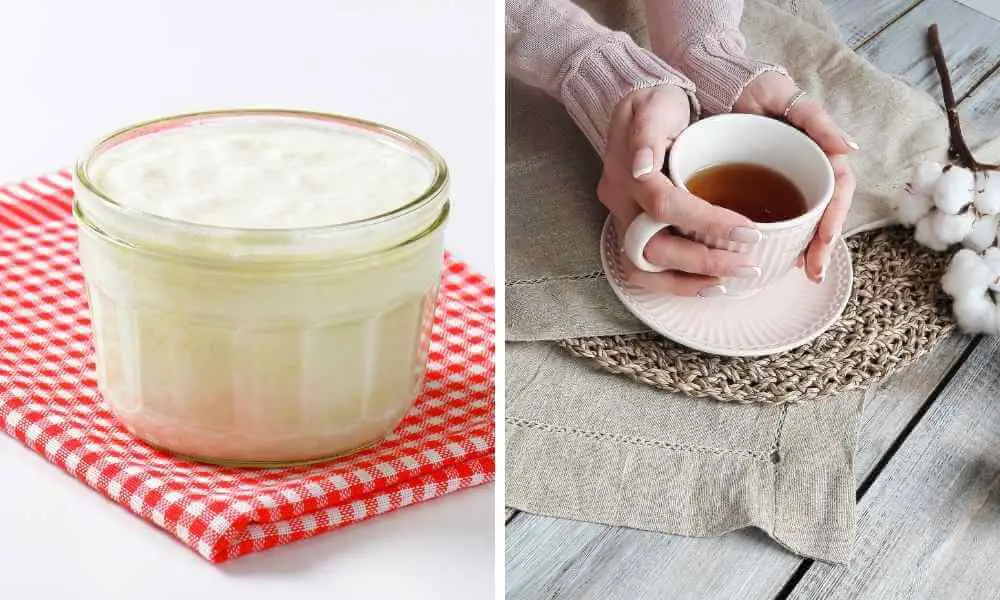If kefir is the latest way you’re trying to improve your health, it’s natural to wonder about all the ways you can use it.
Maybe you just don’t like the taste or you’ve been using it for a while now and just want make your kefir less boring.
Now, you’re wondering, can you put kefir in tea. And what a combo! The antioxidants and anti-inflammatory effects of tea with the gut health-boosting effects of kefir.
But does putting it in tea cause it to become ineffective, or perhaps interact badly?
Let’s find out.
What is Kefir?
Kefir is a fermented drink. It’s sour and reminiscent of yogurt with a slightly carbonated feel in some cases.
Unlike yogurt, it’s made with kefir grains which consist of acetic acid bacteria, lactic acid bacteria, and yeast.
While kefir made out of cow’s milk is very popular, you also get kefir made out of plant-milk varieties, sheep’s milk, goat’s milk, coconut water, and even sugar water.
You will be able to find flavored varieties too, just be careful, those are often laden with sugar.
Can You Put Kefir In Tea: The Short Answer
The answer is, not if you like your tea hot.
The healthy bacteria in kefir are destroyed at 115°F (46°C). Probiotic bacteria already start dying at 98.6°F (37°C) if exposed to that temperature for a few hours.
Black (Ceylon) tea is brewed at 194°F (90°C). Green tea is brewed at around 167°F (75°C). Both these teas, even when cooled down just enough to drink comfortably are still hotter than 115°F.
If you don’t like iced tea or even just cold tea, you can let it cool down to a few degrees above room temperature (72°F or 20°C).
Just higher than body temperature (98.6°F or 37°C) might be a better comparison.
Other than heat being an issue, there is no reason why you can’t add kefir to your tea.
An In-Depth Look
So, as you’ve seen, heat above 115°F destroys the helpful bacteria. But are there any other considerations?
Does the Type of Kefir Matter?
Sadly, no, it doesn’t matter. The bacteria are all affected the same way. And the bacteria in different types of kefir are all the same. It’s the beverage it’s made with rather than kefir grains that differ.
Will All the Other Benefits Be Lost?
Many of the benefits like the cholesterol-lowering effects, blood sugar-lowering effects, and healing properties are due to the probiotics in kefir.
The improvement in lactose tolerance also goes away with the probiotics.
However, if you enjoy the taste of kefir in your hot tea and are lactose intolerant, don’t worry. The probiotics break down the lactose and this happens before the kefir gets to you.
Some of the other nutrients will still be present, albeit in small quantities, so kefir isn’t without any benefit at all once heated.
There will still be calcium, vitamin D, potassium, vitamin A, and possibly a few of the B-vitamins present, at least in most types of kefir.
Unfortunately, kefir made from sugar won’t contain many of these nutrients unless fortified.
How to Add Kefir to Tea and Preserve the Health Benefits
If you’re set on putting kefir in your tea, no problem. You just need to be prepared to drink it cooler.
Kefir will retain its health benefits as long as you never heat it more than lukewarm.
You are free to add it to lukewarm tea or make yourself a healthy drink using iced tea and kefir. If you enjoy the taste and the combination of benefits, go for it.
